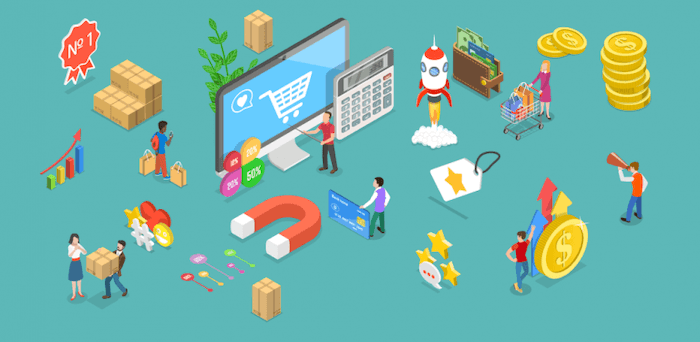What is downselling?
Downselling is a sales tactic where you offer customers an alternative product or service that’s cheaper than the one they were initially considering. Let’s suppose you’re looking to buy a new car. You love the latest model, but the price is too high for your liking. Rather than letting you leave the showroom with nothing, the salesman directs you to a less expensive but really decent model. He’s not pushy and doesn’t interfere with your original decision, but you like his approach and decide to go with his suggestion. Downsell accepted!
What is the difference between downselling and upselling?
Upselling is a technique where you suggest a more expensive version of a product to a customer. Downselling is used when the customer decides not to proceed with the purchase. You offer them a cheaper alternative, which improves your chances of making a sale.
Downselling is most effective when:
- The customer is about to walk away
- A product is out of their range
- The customer is hesitant to commit, such as to a time-consuming service
The ultimate goal of this approach is to acquire a customer, even though you may not profit as much right away.
Benefits of downselling
Downselling can be a great tactic for your business and help you gain customers over time. Here are its key benefits:
- Downselling allows you to place entry-level items in your product catalog. This way, you improve the customer experience for people who cannot afford to buy premium products. Later, the same audience has the potential to turn into brand loyalists and strong advocates.
- You can get better profit margins from lower-priced items (contrary to what we expect), and it will be easier to sell such items in volume, which will be more profitable. Such items can increase the footfall or website traffic and give you an edge over competitors who sell similar products.
- Downselling also creates a sense of urgency in the customer’s mind. They want to invest in the items before the prices go up. It motivates them to avail themselves of a limited-time discount and come for purchase again to your business because they feel more valued by your business.

When to downsell?
Now that you understand downselling better, it is time to talk specifically about when to downsell. It is a major pain point for many business owners, so let’s discuss this in detail.
We wish we could say that x is the right time to downsell, but this is not how it works in business. Every business has a unique program and offers. Generally, downselling is never a bad idea because it gives more opportunities for your visitors to start working together. You can achieve this in a few ways.
For example, let’s say that they are on the checkout page and decide not to buy. You can pop up the downsell offer here. Or, you can send the downsell offer at a later date with a cart abandonment email. If you had a physical launch and collected emails from attendees, you can email them later, asking why they did not buy. And then, you can give them a discount or a compelling CTA to bring them to your landing page. If the price was the biggest reason someone did not buy, the discount will bring them back and make them feel valued.
5 best practices in downselling
1. Be open and honest
Whether you’re downselling or just advertising, the rule remains the same: always be open and honest. Don’t bury your product under a mountain of different prices and offers. If your first offer seems too ridiculous to be true, then the downsell will never seem as reasonable. If your customers have reason to believe there may be something amiss, they will never stand by you.
2. Offer free trials
A great way to keep honest is to give your customers a chance to try out your product or service for a brief period. If they can see for themselves how great it is, then the full price will seem much more worth it. Plus, they will see you aren’t hiding any flaws or issues with it. It’s the best way to let your customers reach their own conclusions, even if they don’t buy right away.
3. Stand by your ideal offer
It can be tempting to cut your prices to help compete with others in your market. This is a good practice for large-scale, multi-billion-dollar corporations, but it can be a failure for some businesses. If people aren’t biting your main product, only reduce your downsell. You can’t make a profit if your main product barely hits your margin, so you have to work at drawing your customers into it more. A more attractive downsell that appropriately highlights your core offer is better than a cheaper, important product.
4. Try installment plans
Not many people can afford to splash a lot of cash on a single purchase straight away. But that doesn’t mean they have to be deprived of it. An installment plan gives everyone the chance to commit to your product one month at a time. The most important thing to remember about an installment plan is that it should not equal the same amount as your core product. For example, if your course costs $400, offer a four-month installment plan of $110 per month.
5. Deal with abandoned cart emails
Sometimes a customer is on board with your product right until they have to hit that buy button. If this happens, set up an automated email that contacts your customer with an exclusive timed offer. Giving a customer a $25 discount on their basket if they finish the sale in 12 hours could help cement you as their go-to seller for your service. Just make sure you keep the deadline tight, as a firm deadline can help push a decision in your favor.